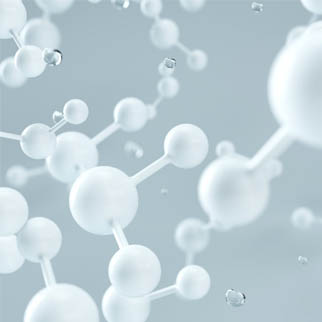Our hydrogen solutions
Hydrogen is a renewable energy carrier, a bridge between different forms of energy, flexible and adaptable, making it a formidable lever in the energy transition. It can be used to store electricity or to produce heat, and contributes to decarbonising mobility and industry. Explore our hydrogen solutions!


Your low-carbon hydrogen architect and logistics expert
Do you want to use hydrogen to decarbonise your energy consumption? To set up projects or develop local hydrogen ecosystems? To encourage rapid expansion of the sector and the use of this energy for tomorrow in your territory? We can help you realise your strategy, programme and projects across the whole hydrogen value chain, drawing on our expertise, our mastery of infrastructures and logistics, and our position as a go-to intermediary between energy producers and consumers.
Practical operational solutions for hydrogen
We can support you in realising your project, from the strategic planning and design of hydrogen ecosystems through to the operational launch: processing, metering, compression, transport, surface and geological storage, and then distribution via filling stations. Our solutions can be adapted tolocal and/or global ecosystems, for any quantity or use.
Switch to low-carbon and renewable hydrogen
We support the efforts being made by industry and the territories to reduce their carbon footprint, particularly by encouraging hydrogen production from renewable energy sources or biomass. Discover how we can help you along the path to the future.
The solutions we offer
Make way for low-carbon and renewable hydrogen with Power-to-Gas
Power-to-Gas consists in producing hydrogen through the electrolysis of water using renewable energy. It can then be stored, used directly, or injected into a piped network either on its own or mixed with natural gas. This process is a way of dealing with the natural variations that occur when generating renewable energy using wind, solar or hydro, which are highly dependent on weather conditions. Converting renewable electricity into hydrogen thus helps diversify and secure supplies of green energy.
How does it work?
Electrolysis uses an electrical current to break the water (H2O) down into oxygen and hydrogen gases. The hydrogen that is produced is referred to as “green hydrogen” if the electricity is from renewables.
An opportunity to use recovered CO2
Hydrogen can also be converted into methane or synthetic fuels through a CO2 hydrogenation reaction, providing an opportunity to recycle the CO2 captured by certain business sectors (industry, methanisation, etc.) as part of their work to control their carbon footprints.
Hydrogen targets in the REPowerEU plan for 2030
Hydrogen: an energy source supporting the decarbonisation of industry and mobility
Hydrogen has established itself as a decarbonised energy carrier for crucial fields such as heavy transport, urban mobility, industry, and heat and electricity production.
Decarbonising the way hydrogen is made represents a significant factor in territorial competitiveness and economic dynamism. In fact, out of about 1 million tonnes of hydrogen consumed in France, 94% is produced using fossil fuels. Switching over to decarbonised production would therefore avoid about 25 million tonnes of CO2 emissions in Europe.
France backs low-carbon and renewable hydrogen
As part of the 2020 “France relance” plan, a national strategy was introduced for the development of decarbonised hydrogen, with three priorities:
decarbonise industry, establishing a French electrolysis sector,
support research, innovation and the development of expertise to encourage new uses.
Low-carbon and renewable hydrogen is thus central to the French Long Term Energy Schedule (PPE). The Energy and Climate law also sets out ambitious targets for the industrial, energy and mobility sectors: it establishes the prospect of green hydrogen accounting for 20 to 40% of total hydrogen consumption by 2030.

Hydrogen’s attractiveness also resides in the potential it brings for reindustrialisation and increased attractiveness for the territories.
Future partner?
Have you developed an innovative hydrogen solution? Are you now looking for a partner to get it publicised and deployed? Do you feel you can match up to the values held by Teréga Solutions?
If so, please do not hesitate to contact us!

Our other solutions:
- DigitalSee the solution
- MethanizationSee the solution
- Low carbon mobilitySee the solution






